FEB { PRODUCT TEST } SUPERPEDESTRIAN COPENHAGEN WHEEL
Sean
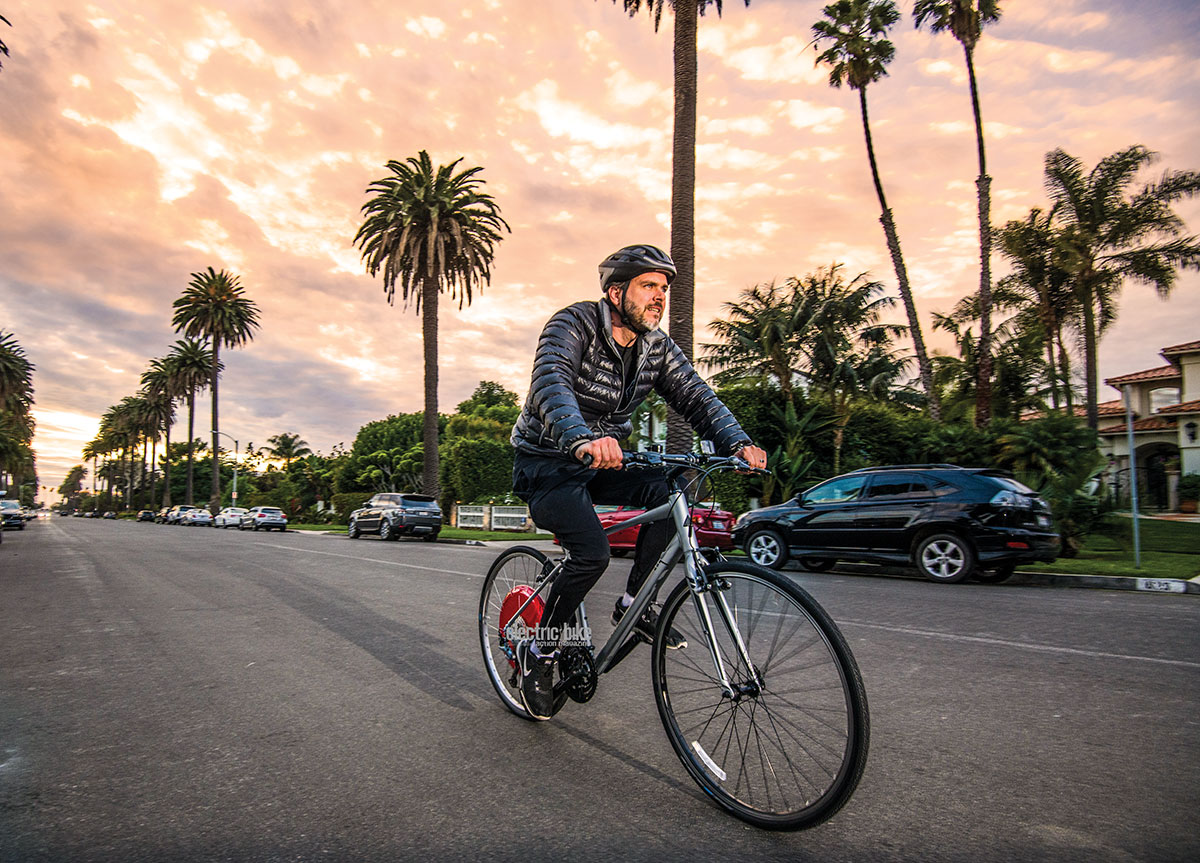
Easy made easier—just bolt on and go!

There are a growing number of bolt-on aftermarket wheels available to turn a normal bike into an electric one. BionX was one of the first, and it’s a good system, though it has to be installed by an authorized bike shop per the warranty and for the complexity of the system.
Two more recent startup companies have crowdfunded their way into existence. The Copenhagen wheel was one of those, but after beating its desired investment goal, it seemed to hit a bump in the road on delivery.
Apparently, despite the massive interest generated and the seemingly great idea for this product, the many delays created many doubters. Just another vaporware product?
Over the months we have watched excitedly to see if the final product would be as good in real life as it was on paper. Of course, none of that excitement topped the moment when the folks at Superpedestrian called up to offer us the chance to test the wheel on a complete bike. The bike they sent was a Marin Fairfax SC2, and it was first sent to the Bikeguy Bikes shop in Chatsworth, California, who installed it for us. The wheels are also available separately.
“We don’t know if this is practical, but it was definitely novel and fun!”
By itself, the Marin Fairfax SC2 retails for $599.99. With the Copenhagen wheel, it’s $2098. There’s no savings for buying both together, but as a full system, we discovered the combo worked well in unison.
Besides Marin, there are other full build options from brands like Public, Papillionaire and others—from low step-through hybrids to drop-bar versions.
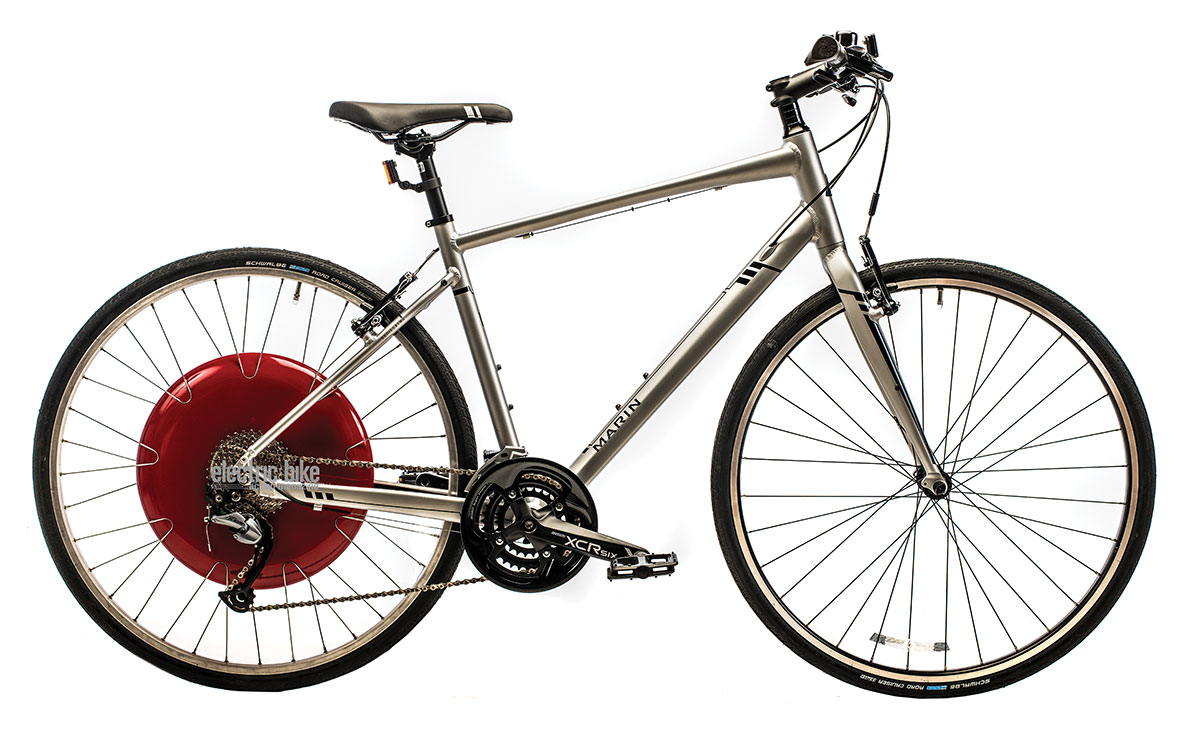
THE RIDE
The Fairfax is a simple, well-designed bike with flat bars made for easy commutes and jaunts about town. Installing the Copenhagen wheel involves just bolting the wheel on and strapping a torque lever to the chainstay, which ends up looking exactly like a back-in-the-day coaster brake arm.
The big, red rear hub contains everything for the whole system. The battery, motor and controller are all inside in one eye-catching, attractive package. It actually looks great, and the bright red, large hub offers great branding. It doesn’t scream “electric,” despite the large size.
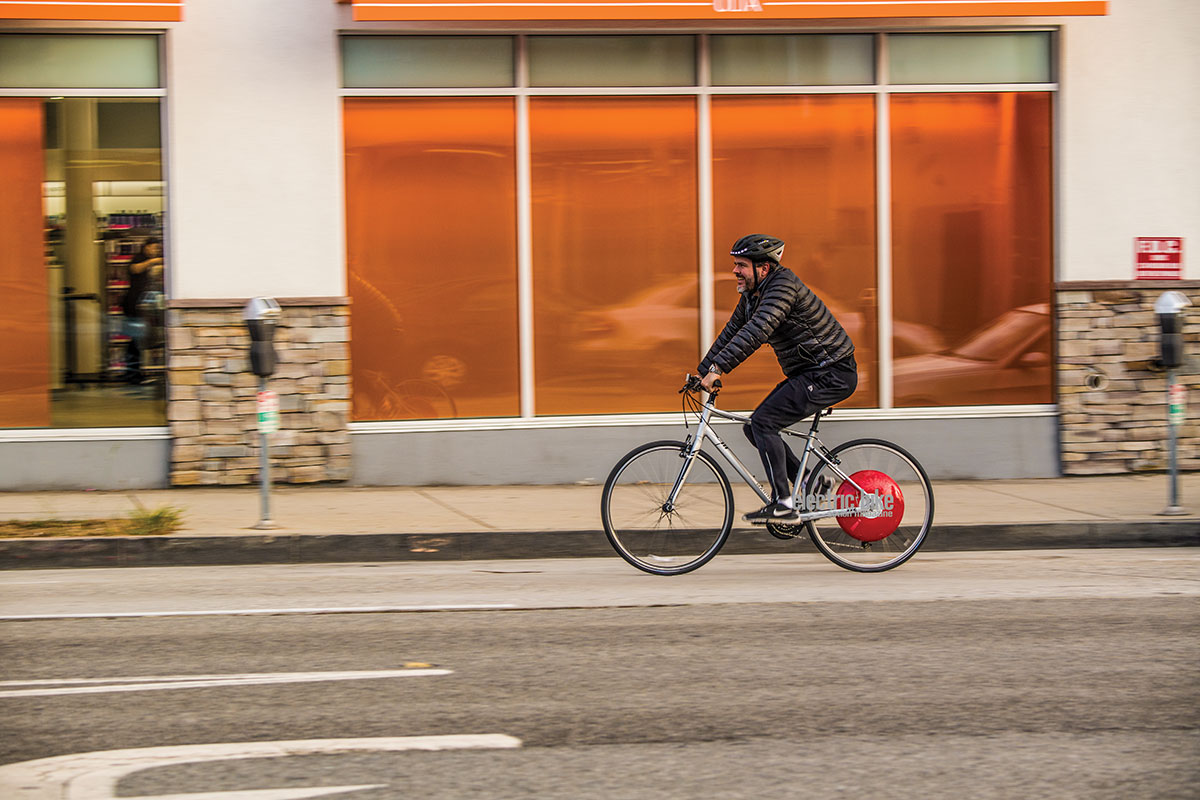
Operation is simple—you charge it with the included charger with a Rosenberger plug, and when charging, you remove the plug and a cap pops in place to keep dirt and water out of the connector. There’s a simple rotary switch, which turns on the system and a series of LEDs light up to show you the charge status. They can blink to show error messages as well.
There’s a smartphone app to control the system, and you can download it and configure the wheel. It’s a one-person user app, so you can’t let friends use it easily, unless they take your phone with them to activate the wheel when they turn it on. It’s mated to one device, and you have to give permission to transfer ownership to another user. You do have to use the app to start the wheel each time, which we’re told is for safety reasons; otherwise, the wheel won’t provide any assistance.

With the app, if you want, you can simply set it and forget it, setting it to Exercise, Off, Eco, Standard and Turbo before you leave, or you can mount your phone to the handlebar and control the bike on the fly. The included telemetry is quite robust and offers trip tracking, or information about the wheel, including current power output, battery level, speed and more. It connects via Bluetooth 4.0 Low Energy, offering less drain on both your phone’s battery and the wheel’s.
“We’ve never been on a bike or system where the power delivery
happened the microsecond you pushed on the pedals.”
Because the motor is direct drive, meaning it’s one big motor and doesn’t use planetary gears, it can offer regenerative braking. You can do this in a couple of ways. One is to go one click below Off to Exercise, which means you’re pedaling against the motor drag, essentially charging the battery as you ride. But, this is the opposite of adding power. It might be a great training aid for cyclists—actually, it’s pretty serious resistance working against you.
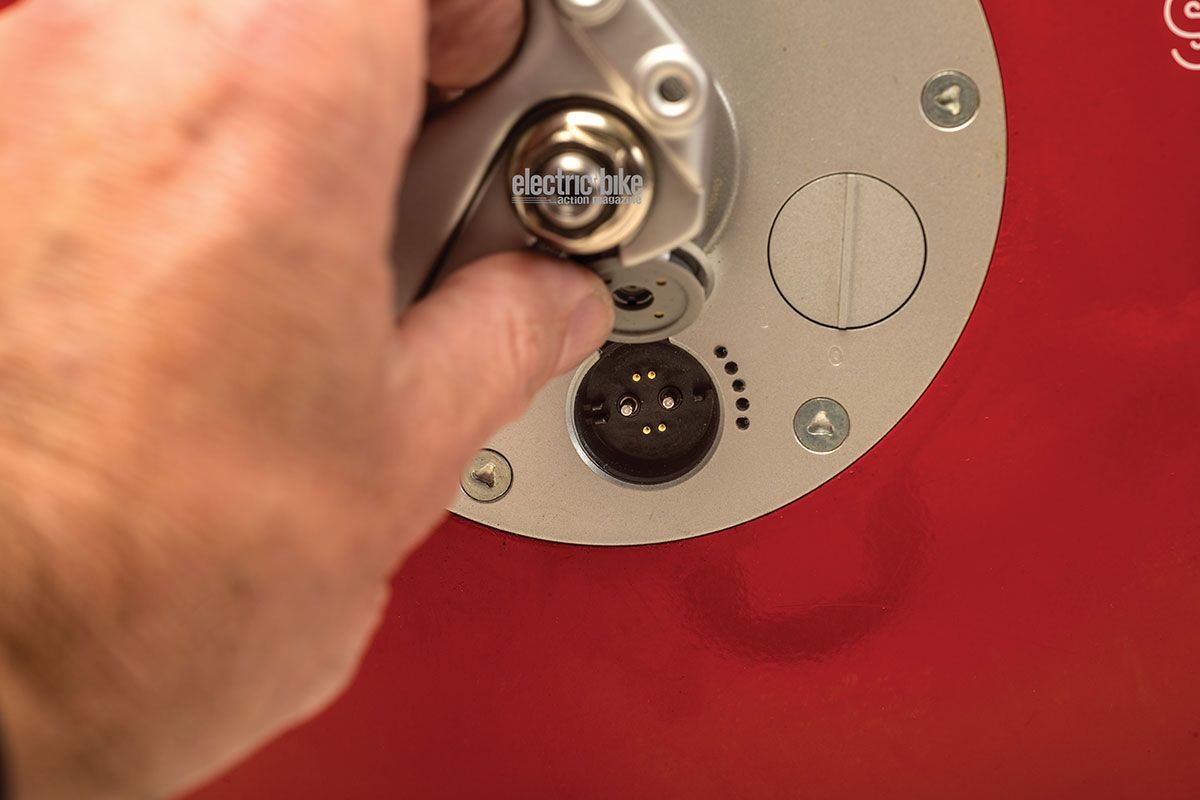
The other way to actuate the regen mode is to pedal backwards. We found this to be way more useful. The more you backpedal, the harder the resistance is. We found we could come to a complete stop in traffic using this without using the brakes at all; in other words, true motor braking. We don’t know if this is practical, but it was definitely novel and fun!
INSTANT POWER
Once we had it set, we got out on the road. In Standard mode, the power was not only plentiful but instantaneous. We’ve never been on a bike or system where the power delivery happened the microsecond you pushed on the pedals. For some riders, the power push was almost too much. It can be a little jerky, as the power comes in with the severity of somewhere between a whoosh and a kick.
Getting up to cruising speed, around 18 mph, was very easy on this bike, and we found we didn’t shift much at all with it. Most of the time we kept it in the mid-to-high range. The hub itself weighs in at 16.8 pounds, and it’s at the rear of the bike, but it doesn’t feel tremendously unbalanced. It’s still easy enough to carry upstairs or load onto a bike rack.
If you want a harder ride for training as an example, you can set it on Exercise mode, which will turn on the regenerative mode and work against your power. It’s harder than a normal bike to pedal, and you can put energy back into the battery as you ride, so theoretically you can use some of that to get you home when you’re exhausted.
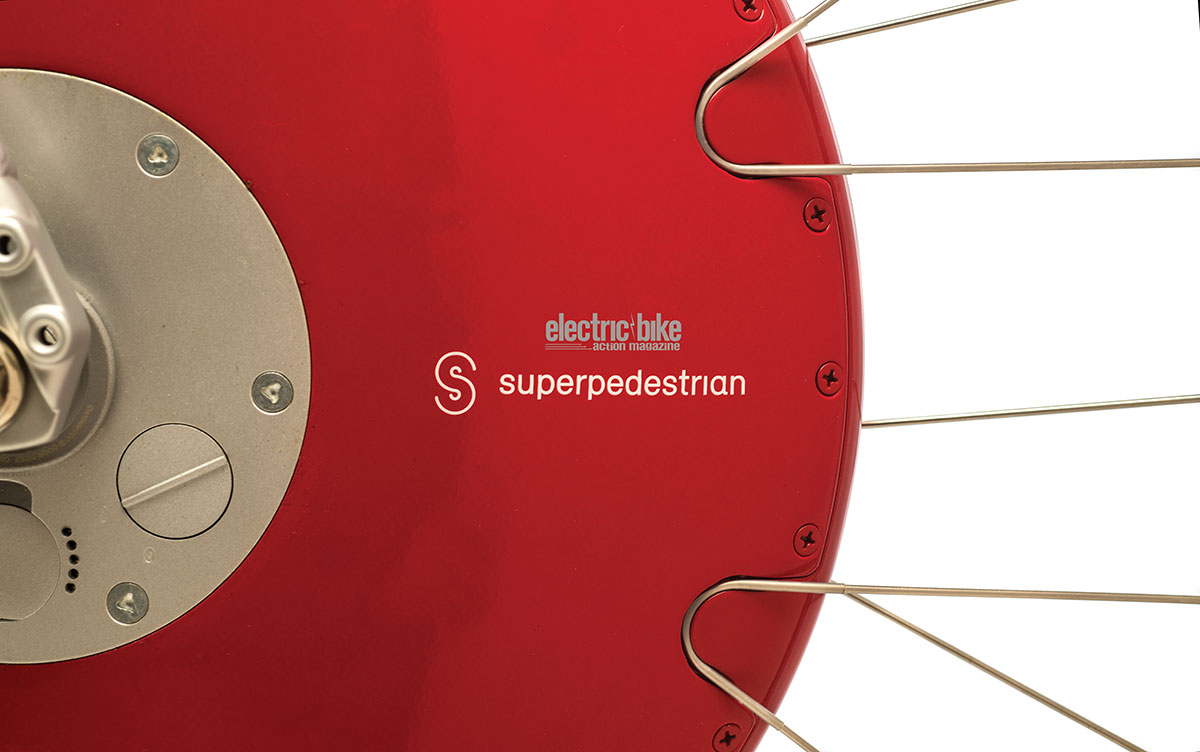
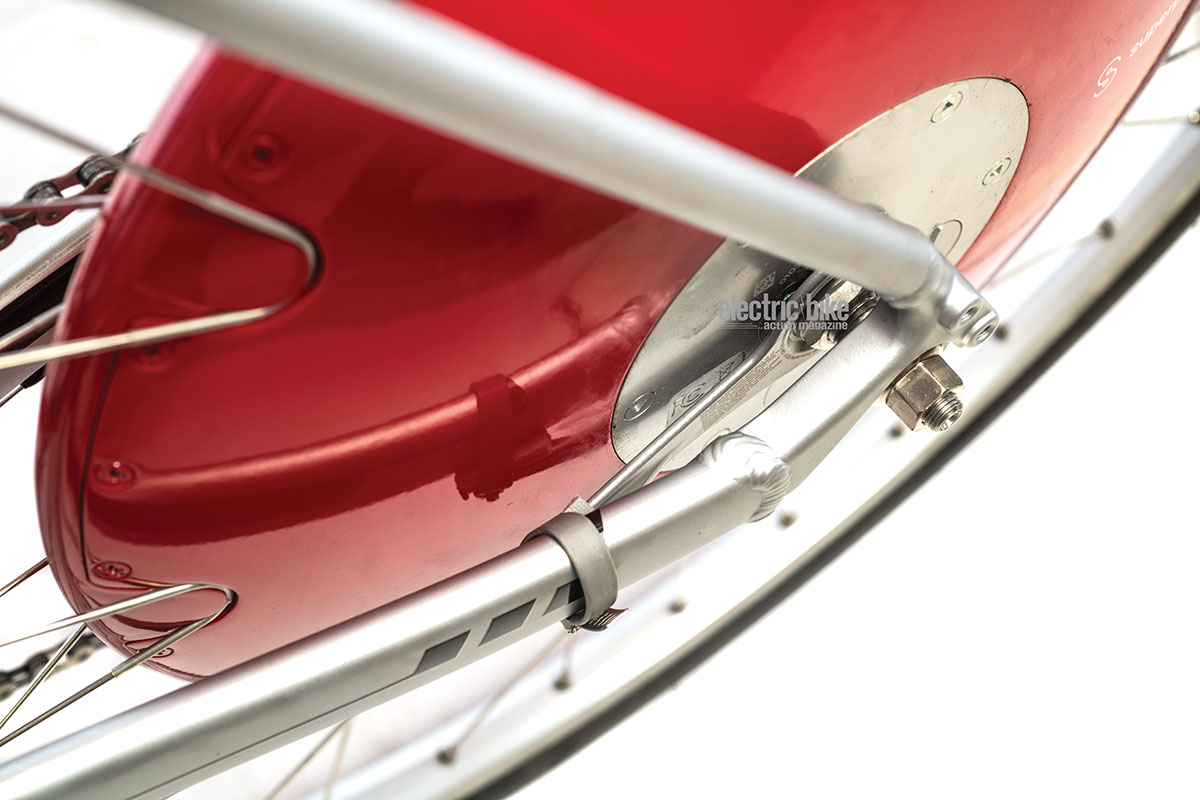
Battery life is surprisingly good in the 279-watt-hour, 48-volt battery. They claim up to 30 miles, but we’re pretty sure that’s on Eco the whole time with a light rider. However, 20 miles is pretty doable. With a four-hour recharge time to 100 percent from zero, a long commute to work or to go see a friend won’t give you range anxiety, especially if you take your charger with you.
The wheel is available in a single-speed configuration or set up for a 7-/8-/9-/10-gear Shimano or SRAM cassette.
The wheel alone can be purchased direct from the Superpedestrian website. You have to know the size of your wheel and the tire size. It’s available in 622mm/700c/29 inches or 559mm/26 inches, as well as 25c road, 35c hybrid or 50c mountain. Then you have to decide whether you want a black or silver rim.
Currently, there’s only an option for rim brakes. You can also have their experts guide you through it right from the website.
Thanks again to Bikeguy Bikes in Chatsworth for professionally building up the Marin with the Copenhagen wheel.
STATS
Price: $1,498
Weight: 16.8 pounds
The post FEB { PRODUCT TEST } SUPERPEDESTRIAN COPENHAGEN WHEEL appeared first on Electric Bike Action.